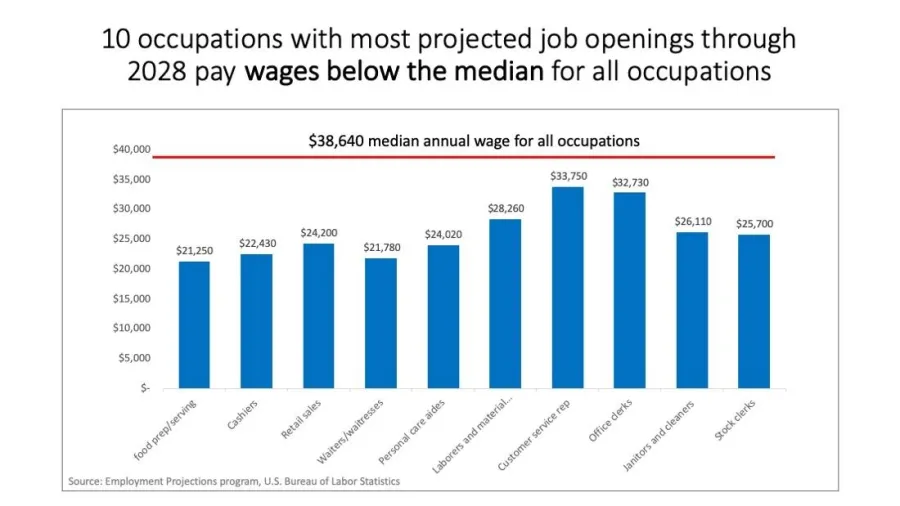Time for a check-up ... How is labor faring under this administration and Congress?

As we head full swing into the 2020 Presidential Election year, let’s take a hard look at how the men and women of the United States labor force have fared under this administration.
Social Security in danger of cuts:
- Federal worker pensions have been targeted to offset deficit-inflating tax cuts for the wealthiest of Americans.
- Social Security benefit rules are changing to encourage workers to retire later, meaning an aging workforce with increased medical needs.
- Many employers are increasing retiree costs for health care or phasing out coverage altogether.
- Medicare isn’t available until age 65 and doesn’t cover all medical costs.
Health care and insurance in danger of cuts:
 Medicare, Medicaid, and the Affordable Care Act (ACA) are under attack. Republicans in Congress have steadfastly opposed the ACA and have attempted to eliminate, weaken or repeal it more than 100 times.
Medicare, Medicaid, and the Affordable Care Act (ACA) are under attack. Republicans in Congress have steadfastly opposed the ACA and have attempted to eliminate, weaken or repeal it more than 100 times.- ACA’s navigator programs -- which raise awareness about the availability of marketplace plans, help people apply for federal subsidies, and provide information about plan options -- have been cut by nearly 84 percent.
- Conservatives in Washington continue to try to chip away at the ACA. Eliminating the current ACA would result in:
- 20 million Americans losing their health insurance and 135 million Americans with pre-existing conditions stripped of their protections.
- Premiums increasing for millions more.
- Insurance companies not covering the costs of prescription drugs.
- Seniors paying more for prescription drugs because the Medicare donut hole would be reopened. Medicaid expansion would be gone.
- Free wellness exams and contraception would be gone.
- Individuals and families getting financial support through a tax credit to afford coverage would lose those credits.
- Young people would no longer be able to stay on their parents plan until age 26.
Prescription drug costs in danger of continued high costs:
- To fight th
 e rising costs of prescription drugs, H.R. 3 was introduced by Democrats to establish a fair price negotiation program, protect the Medicare program from excessive price increases, and establish an out-of-pocket maximum in some plans. It limits the outrageous prices charged by the powerful pharmaceutical corporations.
e rising costs of prescription drugs, H.R. 3 was introduced by Democrats to establish a fair price negotiation program, protect the Medicare program from excessive price increases, and establish an out-of-pocket maximum in some plans. It limits the outrageous prices charged by the powerful pharmaceutical corporations. - Senate Majority Leader Mitch McConnell (R-Ky) has publicly said the HR3 will not be considered in the Senate.
- An alternative measure, HR 19, was created by Republican legislation: The “Lower Costs, More Cures” legislation still allows drug corporations to continue to set prices high, including faster than inflation for Medicare patients.
- Under this bill, the out-of-pocket limit is 50 percent higher than in the Lower Drug Costs Now Act (H.R. 3). The UAW has fully support this initiative, along with dozens of other unions.
- Right now, U.S. citizens pay more for prescription drugs than any similar countries around the world. From 2012 to 2016, insulin costs nearly doubled, although insulin has been on the market for almost 100 years. Usually prices go down with longevity, not up.
- Then, in 2018, nearly 28 million Americans watched the cost of their medications rise while pharmaceutical companies benefited from huge tax breaks.
Wages stagnant and low wage vulnerable:
Some would like to say the economy is humming along beautifully, however, from the Brookings Institute November 2019 Report, there is “a vast segment of workers today earning wages low enough to leave their livelihood and families extremely vulnerable”:
- 53 million Americans between the ages of 18 to 64 — accounting for 44 percent of all workers — qualify as “low-wage.” Their median hourly wages are $10.22, and median annual earnings are about $18,000.
- According to the U.S. Bureau of Labor, the 10 occupations with most projected job openings through 2028 pay wages below the median for all occupations
- Despite the rise of wages, when factoring in inflation, real wage growth has actually fallen 9 percent since 2006.
Trade stagnant and requires policing of agreements:
The administration’s United States Mexico Canada Agreement (USMCA) is not a “fix” for the many problems created by NAFTA. Experts say:
- According to an analysis by the U.S. International Trade Commission, USMCA will create just 51,000 new jobs in manufacturing, mining and farming over the next six years. The International Monetary Fund (IMF) predicts actual loses in the auto sector.
- Proponents say it requires auto workers to have a minimum salary of $16 an hour. In fact, this wage is an average and companies’ intent on keeping business as usual will go through great lengths to keep wages down and jobs in Mexico.
- As it stands, USMCA will do nothing to discourage companies from shipping jobs across the border.
Job security in peril:
- In auto manufacturing, it is not unusual to find that 40 percent or more of the workforce is employed by a temporary agency.
- Not only do employers fill many positions that were once good-paying jobs with temps, temporary workers have no voice on the job, don’t benefit from collective bargaining, have few or no rights at work and no job protection.
- Although the economy is “expanding”, real wage growth has not kept pace with worker productivity, and union density is just 6.5 percent in the private sector and 10.7 percent overall.
NLRB and judicial appointments chip away at worker rights and safety:
 Since the 2016 election, there have been several concerning anti-labor appointees to the National Labor Relations Board (NLRB), the government agency that enforces labor law as it relates to collective bargaining and unfair labor practice charges, such as officials like William Emanuel, a labor lawyer at the notorious anti-worker law firm Littler Mendelson.
Since the 2016 election, there have been several concerning anti-labor appointees to the National Labor Relations Board (NLRB), the government agency that enforces labor law as it relates to collective bargaining and unfair labor practice charges, such as officials like William Emanuel, a labor lawyer at the notorious anti-worker law firm Littler Mendelson.- At the same time, anti-labor justices have been confirmed to the U.S. Supreme Court and three precedent-setting Supreme Court decisions have weakened unions, the ability to collectively bargain and to hold corporations accountable for unfair labor practices, and other anti-labor tactics. These include:
- The nomination of Eugene Scalia as U.S. Secretary of Labor.
- The appointment of Supreme Court Justice Kavanaugh, who rejects the right of workers to receive employer-provided health care and supports employers in denying employees relief from workplace discrimination;
- Supporting Justice Neil Gorsuch, who supported the labor arbitration ruling this May (ruling that companies can use arbitration clauses in employment contracts to prohibit workers from filing joint class action lawsuits) and the Janus case in June 2018 (which states that public employees do not have to pay fees to unions to cover the costs of collective bargaining).
- Continuously selecting conservative federal judges across the country at an alarming rate — all of whom have lifetime appointments to make critical decisions affecting the lives of the American people.
So, as you can see … UAW brothers and sisters -- and the general U.S. population -- are NOT faring well under this anti-middle class Washington agenda.
